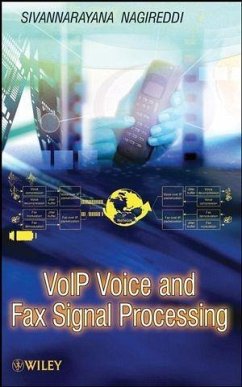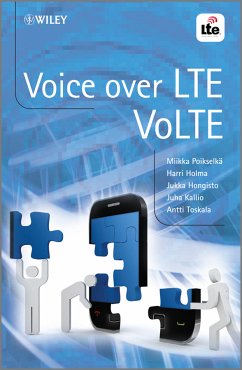
IMS Multimedia Telephony over Cellular Systems (eBook, PDF)
VoIP Evolution in a Converged Telecommunication World
Versandkostenfrei!
Sofort per Download lieferbar
107,99 €
inkl. MwSt.
Weitere Ausgaben:

PAYBACK Punkte
0 °P sammeln!
IMS Multimedia Telephony service has been standardized in 3GPP as the replacement of the circuit switched telephony service in cellular networks. The multimedia telephony service consists of several service components such as voice, video and text. 'IMS Multimedia Telephony over Cellular Systems' provides a comprehensive overview of the service that will enable enriched telephony for mobile users. Enriched telephony fulfils the user's desire to communicate in new ways, for example by sharing pictures and video clips. In addition to an overview of the Multimedia Telephony service, the book focu...
IMS Multimedia Telephony service has been standardized in 3GPP as the replacement of the circuit switched telephony service in cellular networks. The multimedia telephony service consists of several service components such as voice, video and text. 'IMS Multimedia Telephony over Cellular Systems' provides a comprehensive overview of the service that will enable enriched telephony for mobile users. Enriched telephony fulfils the user's desire to communicate in new ways, for example by sharing pictures and video clips. In addition to an overview of the Multimedia Telephony service, the book focuses on the modern media processing methods, which allows the quality of the packet switched voice and video telephony not only to match but also possibly exceed the quality of circuit switched telephony. Such key components as adaptive jitter buffering and adaptation of conversational media are explained in detail. Key features: * Detailed description of how Multimedia Telephony sessions are set-up and controlled * Analysis showing the capacity and quality of VoIP and Multimedia Telephony in cellular networks * Coverage of other IMS services such as PoC specified by 3GPP and OMA * Description of suitable QoS and radio bearers for Multimedia Telephony * Explanation of the modern radio interface, especially High Speed Packet Access, which is based on concepts such as link adaptation and fast hybrid ARQ The possibilities for the current and future standards covered in this book make it an indispensable resource for engineers, designers and researchers in VoIP, telecommunication companies and universities teaching and conducting research in telecommunications. It will also be of interest to managers needing an in-depth knowledge of the engineering and key issues of this complex technology, and students aspiring to develop a career in this area.
Dieser Download kann aus rechtlichen Gründen nur mit Rechnungsadresse in D ausgeliefert werden.












